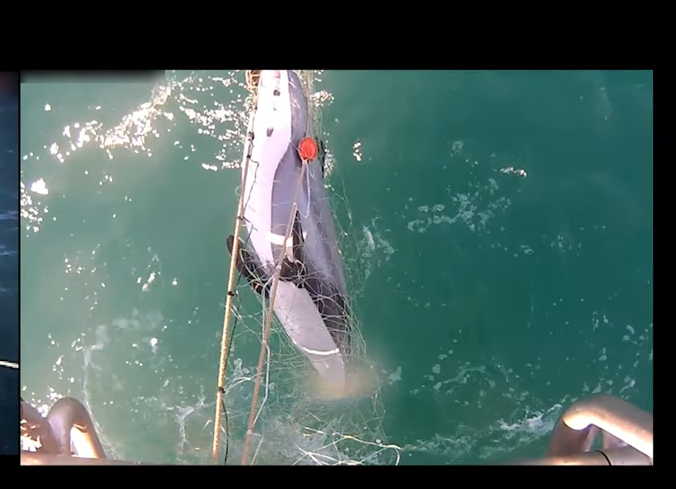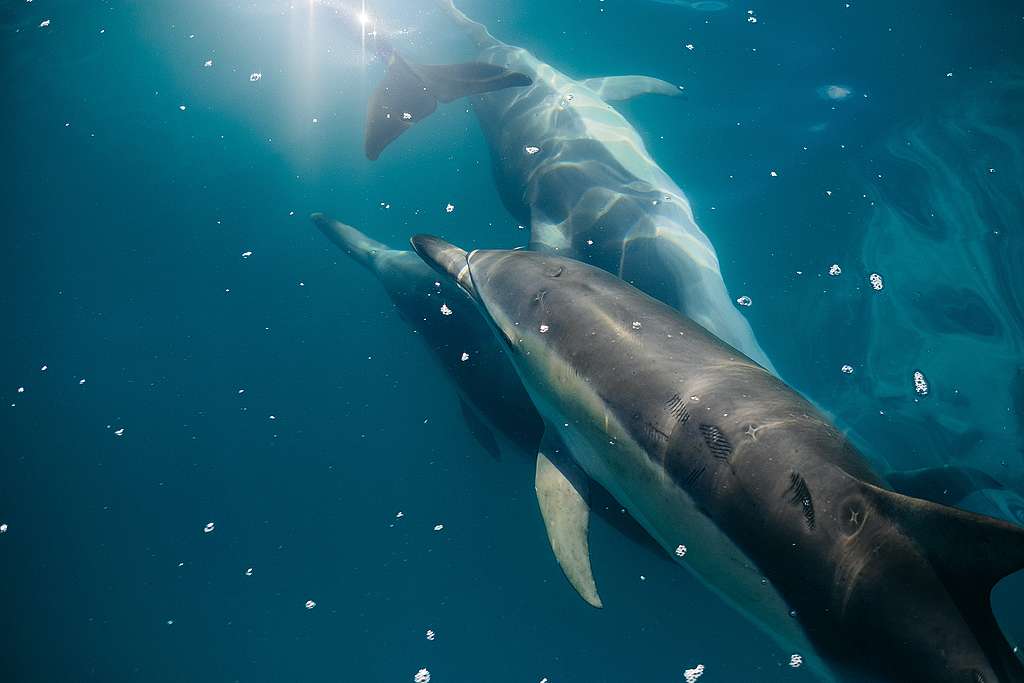Last week, the coalition Government quietly snuck through its decision to delay the cameras on boats programme, something that’s been consistently pushed back since they came to power in 2017.
It’s imperative we get cameras throughout the New Zealand commercial fishing fleet because without this, we really don’t have a true idea of what’s happening out at sea. You don’t have to be a fisheries-hater to think this, you just need to believe in basic industry accountability and transparency.
As has been noted in the media, when boats have observers onboard, they’re nine times more likely to report a bycatch incident, suggesting that when there aren’t observers onboard (and this is often), this self-reporting isn’t happening as often as it should.
To put it in day-to-day terms, if the way we tackled speeding on our roads was to scrap speed cameras and ask people to report themselves, it’s highly unlikely we’d get a hold on the problem. Speeding would still happen, but our records would look remarkably positive. “Only three speeding incidents this month, excellent result!” That’s why we have cameras in the first place, for an independent record of the situation, and there are sanctions to the individual if the rules are broken.
But the line from the commercial fishing industry on this is often: “you can trust us”. If anyone suggests that self-regulation might not be the most transparent way to do things, this is met with dismissal from the industry, and complacency from the Government. There’s a strange exceptionalism that goes on when it comes to commercial fishing, and an expectation that the rest of us shouldn’t concern ourselves with a fishing industry that’s apparently above the rules we would expect elsewhere.
Without cameras on boats, we simply can’t know whether catch limits are being adhered to, if undersized fish are being caught, or how much bycatch is going on. And without this, it leaves a big question mark over the potential state of NZ waters. Knowing how things are going out there is essential to informing decision-making on our oceans, so this lack of information is a big problem for both fisheries and other ocean enthusiasts.
The problem is urgent because we already know the oceans are in serious trouble. Despite cries from the industry that we have a world-leading fisheries management system, the extinction crisis we’re in paints a different picture. 90% of seabird species in Aotearoa are at risk of extinction, including some of our best-loved penguin varieties. Some of our most cherished marine mammals are also facing an uncertain future, with Māui and Hector’s dolphins and New Zealand sea lions also at risk.
The responsibility for this might not lie solely with fishing; climate change, pollution and a whole bunch of other stressors are contributing to the demise of these species. But fishing plays a big role; we know every year that creatures like this are dying in trawl nets and on longlines, but as we’ve already discussed, because of the lack of cameras there is no accountability for quite how many.
The cameras on boats saga is simply the latest in a series of delays, stalls and changes in direction on fishing decisions from this Government. It’s easy to lose track, with so many issues at play, but one thing has been consistent from this coalition is their total lack of political will to regulate commercial fishing.
To illustrate the history of the cameras on boats issue, we need to start the year before this Government formed, in 2016.
Here’s a timeline:
May 2016
An ‘explosive’ academic report reveals large scale under-reporting of catch across the commercial fishing industry, and also shows MPI having taken no action to prosecute despite knowing about the problems. Greenpeace, who have published several leaked documents exposing this problem previously, calls for an independent investigation into the issue.
September 2016
A ministerial inquiry into the issue finds MPI failed to prosecute systemic fish dumping despite video evidence, and that senior MPI officials blocked prosecution. The recommendations from MPI following the inquiry include video cameras on boats to ensure what goes on out at sea isn’t out of mind.
Footage released as part of this inquiry reveals endangered Hector’s dolphins being caught in commercial fishing nets, with only one of the deaths being self-reported by crew. Greenpeace and others push the need for cameras across the full commercial fishing fleet to ensure reporting is accurate.

September 2017
The coalition Government is formed between Labour, NZ First and the Green Party.
May 2018
Talley’s owned vessel the Amaltal Apollo is caught illegally bottom-trawling in a protected area in the Tasman Sea.
September 2018
West Coast hoki fishery collapses, the very fishery Greenpeace exposed as having far more catch that was intended in leaked documents earlier in the year.
December 2018
Plans for an independent advisory panel, to give expert advice to the Government on making fishing sustainable for the long term are scuppered by New Zealand First.
January 2019
The Government quietly delays cameras on boats rollout again till later in 2019.
January 2019
The Government lobbies to get Talley’s off the international fishing blacklist, after they were caught bottom trawling in a protected area for orange roughy. They promise to prosecute at home.
March 2019
Greenpeace writes a submission for a fisheries review, calling for goals such as cameras on the full fleet, zero bycatch goal, and no new quota.
June 2019
The draft Māui and Hector’s plan is released and is heavily criticised for pandering to the commercial fishing industry. While only giving one option that would satisfy dolphin experts, the remaining options skirt round excluding fishing from their known habitat.
Despite the modelling used to inform the draft plan also being criticised by the scientific panel that reviewed it, the draft is released with heavy emphasis on toxoplasmosis rather than fishing methods that kill dolphins.
Greenpeace delivers a petition signed by nearly 60,000 New Zealanders, and 7,000 individual submissions on the Threat Management Plan – calling for the strongest protections for Māui and Hector’s dolphins.
June 2019
The Government releases plans to rollout cameras on boats in Māui dolphin habitat, but not Hector’s. Under the cover of this announcement they also quietly delay to getting full fleet covered until a ‘holding date’ of July 2020.
September 2019
Major UN report warns unless we reduce pressure on the oceans, including from fisheries, there will be widespread impacts from further extinctions to exacerbation of the climate crisis.
September 2019
Government announces orange roughy catch increase, a species that New Zealand fishing uses bottom trawling to catch.
November 2019
Greenpeace reveals the New Zealand bottom trawling industry destroyed up to 3,000 tonnes of coral in the past year and takes the demand to end bottom trawling on seamounts to the lawn of parliament.
December 2019
Government delays Māui and Hector’s dolphin Threat Management Plan will be delayed, without giving a firm date for delivery.
February 2020
At the South Pacific Regional Fisheries Management meeting in Vanuatu, fishing industry lobbyists and the NZ Government pushed for less protections for vulnerable marine ecosystems from bottom trawling. New Zealand was one of the few voices in the room advocating for less ocean protection, while other groups such as the EU, attempted to increase safeguarding.
February 2020
Undeclared donations are revealed from commercial fishing companies including Talley’s to the NZ First Foundation. Greenpeace calls for NZ First to be locked out of decision making on fisheries and ocean protection as a result, and this is met with dismissal from the Government.
May 2020
The Seabird rescue plan is released by Government, aiming to tackle the 90% of seabird species here that are threatened or at risk of extinction. Despite bold rhetoric, the plan puts in place no mandatory legislation to prevent seabirds for dying on fishing lines. Instead, it asks for voluntary measures to be adopted by the fishing industry.
June 2020
The cameras on boats programme is quietly delayed (again) for fifteen months, making the date of completion October 2021. Environmentalists including Greenpeace and Forest & Bird criticise the move for once again pandering to commercial fishing.
June 2020
Prosecutions of the Talley’s vessel Amaltal Apollo for bottom trawling in a protected area have still not been completed. Two years after the offense. The ship continues to fish in New Zealand waters.
Minister of Fisheries Stuart Nash recorded saying NZ First are blocking protecting the oceans from commercial fishing.

Call on the NZ Govt to commit to implementing cameras on the whole commercial fishing fleet. I want to see a clear plan to meet this deadline and transparent reporting on progress of that plan.
Take Action


